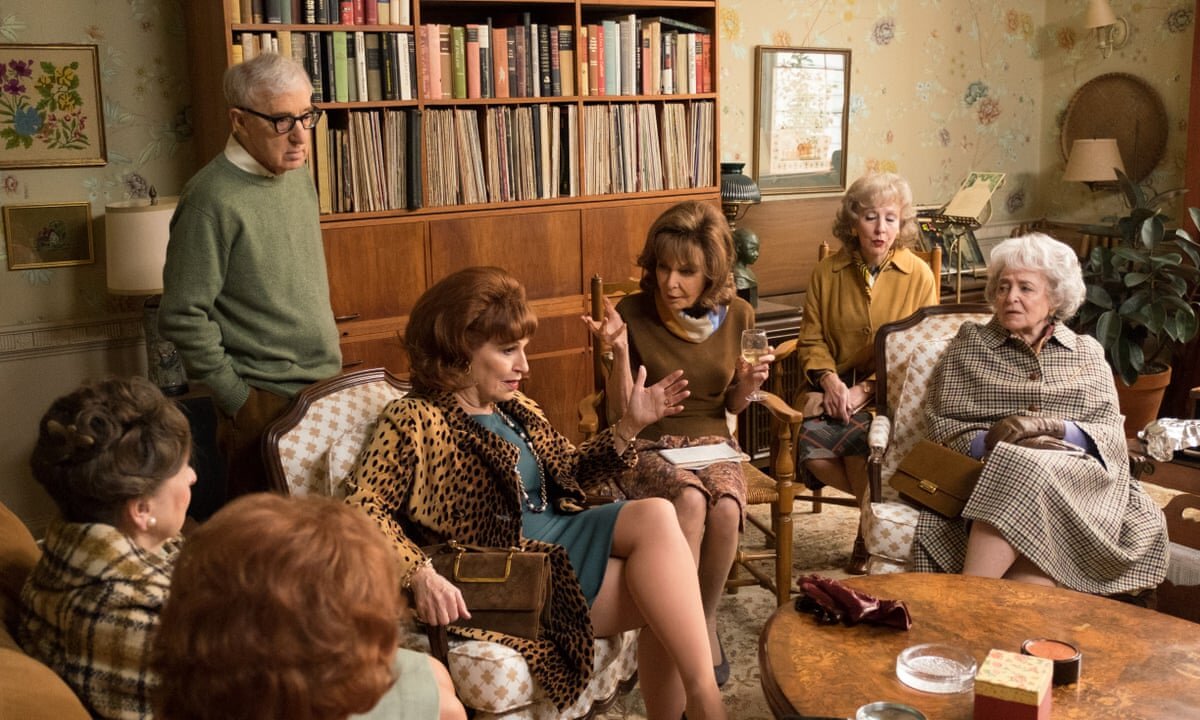Crisis in Six Scenes, Woody Allen, and the Art of Television
“I’ve never seen any of those series, even on cable. I’ve never seen The Sopranos, or Mad Men. I’m out every night and when I come home, I watch the end of the baseball or basketball game, and there’s Charlie Rose and I go to sleep,” Woody Allen said in an interview with Deadline. After Amazon pressured him into making a TV show, requiring no pilot and only six half hours, offering a large sum of money for a series of any genre with any content, Allen complained:
I haven’t had a pleasurable moment since I undertook it … It’s been so hard for me. I had the cocky confidence, well, I’ll do it like I do a movie…it’ll be a movie in six parts. Turns out, it’s not.
I recently watched Crisis in Six Scenes, Woody Allen’s series about a middle class suburban family that briefly harbors a revolutionary fugitive in the 1960s United States, but I’m still not entirely sure what it is. It isn’t a movie; it comes in six episodes. It isn’t a hang-out sitcom, like 30 Rock or Parks and Rec; it’s only three hours long. And it’s not a literary miniseries; it’s hobbled by the aimlessness of all of Woody Allen’s lesser films.
By comparison, the weekly half-hour sitcom has an intentional rhythm. At the end of an episode of The Simpsons or Seinfeld, there is a definite sense of completion. The multi-episode story arcs reveal themselves to be minor interruptions to a pleasant status quo. This can be repeated indefinitely, as it has been for decades with The Simpsons. The viewer doesn’t wait a week anxiously for questions to be answered or a plot to progress. The point is hanging out. Only the last of the Crisis’s eponymous six episodes has any sense of finality. The whole exercise feels like a ninety-minute film stuffed with thirty minutes of repetitive exposition and an hour of filler that was cut into six even segments without regard to any sense of rhythm or timing.
The Sopranos and Mad Men have complex character arcs that unspool over multiple seasons. They can’t be replicated in three hours. And, in any case, Woody Allen doesn’t attempt it.
The miniseries, as a medium, holds a halfway place between the film and the multi-season series. Roots is nine hours. It couldn’t be comfortably seen in a cinema. I watched Crisis in Six Scenes over two evenings, but I could have easily seen it in one. More importantly, a miniseries has a coherent narrative thrust. It is almost always a drama. There’s a plot in Crisis in Six Scenes, but it’s skeletal; it exists so jokes can be hung on it.
It wouldn’t matter what exactly Crisis in Six Scenes was if it were good. But it isn’t. Crisis in Six Scenes is almost intentionally average; not actively bad, and only occasionally frustrating, but one immediately forgets everything except a handful of clever one-liners. In the only gesture to this being a TV show and not an over-long movie, the premise is tiresomely rehashed each episode. The first third of the series can, and should, be passed over. The sixth episode is the only one that’s genuinely funny. It has too many good jokes for the contrived story to bother. Not coincidentally, Miley Cyrus, who co-stars as the fugitive revolutionary, barely appears. She is a terrible actor.
The series would be better with her many scenes excised, even considering the ensuing loss of clarity. Woody Allen is predictably entertaining playing his usual neurotic persona. It’s a funny idea to have him play a character who doesn’t understand the youth of Allen’s own youth, but it works better in theory than practice.
It’s not entirely clear why Woody Allen so frequently constructs such needlessly complicated premises. Most of the show’s best scenes are meandering conversations that bear little relation to the plot. A looser story would make more sense.
With as much freedom as Allen had, it’s a shame he wasn’t more ambitious. And he does next to nothing with the format. Crisis in Six Scenes would be better as a ninety-minute film, but it still wouldn’t be great.
Allen’s recent career is frequently characterized as being in a long state of decline. This isn’t entirely fair. Midnight in Paris in 2011 and Blue Jasmine in 2013 were both quite good. His most recent film, in 2016, Café Society, wasn’t Annie Hall or Crimes and Misdemeanors, but it was funny and memorable. Anyone who makes a film every year is going to create a lot of average fare. Allen hasn’t lost talent so much as purpose. His films would be significantly improved if he spent three years on each one. One would suspect a filmmaker choosing to direct a television series has a specific vision and not insignificant ambition. Woody Allen evinces neither in Crisis in Six Scenes.
There is a lot of conversation now about the future of film and TV. Woody Allen, who makes middle-budget films and middle-level profits, is an ongoing exception to the general trend in cinema. But Allen is 80 years old, and has been famous for decades. His is not a path a young director could follow. There is a lot of enthusiasm about prestige television, The Sopranos and Mad Men and all the shows that Allen hasn’t watched. Will more prestige television compensate for fewer prestige films? Can the success of ambitious cable shows be recreated online? Will middle-budget film directors find a place on streaming services? Woody Allen is not part of this conversation. To the degree Crisis in Six Scenes is instructive, it is as a cautionary tale. The TV show and the movie are not interchangeable mediums. There’s a different skill and a different art. If TV is to produce shows as good as the best films, it won’t be through imitation. Ambitious showrunners must make their own path.
